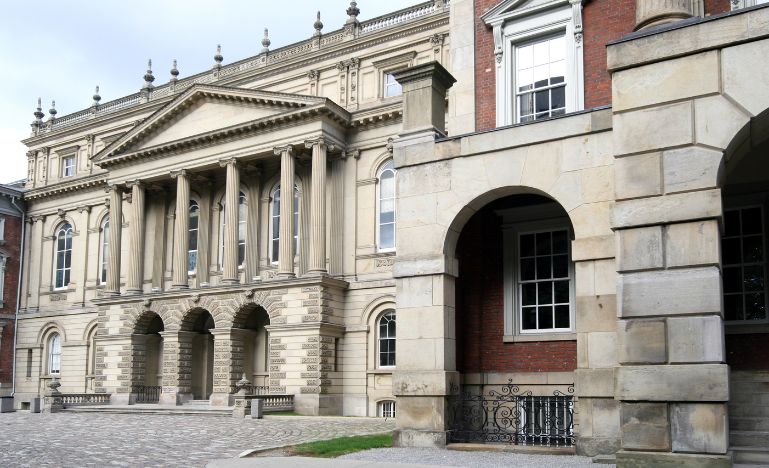Michael Lesage’s one-man quest to shed light on the inner workings of Ontario’s courts
As cases get tossed due to backlogs and delays, lawyer says accessible data is needed to drive improvements

Want to know how many cases were heard and filed in the courts in 2023? If you want those stats for California or Florida, it’ll take you about half a second on Google to find them. But if you’re looking for info closer to home, say in Ontario, you’re mostly out of luck.
With a string of criminal cases ranging from human trafficking charges to child sexual abuse and gun possession being thrown out recently due to backlogs and delays in Toronto courts, lawyer Michael Lesage is in a heated battle with Ontario’s attorney general to get statistics on how many cases are before the courts, the number of judge-only versus jury trials, and disposition rates of cases.
In contrast to the open court principle, Lesage says when he launched his case, the Superior Court had stopped providing even the minimal statistics in its annual report. Prior to a recent report released May 7, the last annual report from court was in 2018.
“If you want to improve something, you need to have some baseline against which to measure that improvement. Otherwise, we're basically having a discussion about ‘why is green a better colour than purple.’ You're simply getting into feelings,” says Lesage.
The civil litigator initially asked the Ontario Superior Court for court file numbers for every civil case resolved by jury and non-jury trials in six Ontario courthouses over seven years. He did get one year's worth of data, but the chief justice denied his broader request.
In his ongoing push for transparency, Lesage filed a freedom of information request with the Ministry of the Attorney General in February 2022, seeking data for courts in Toronto, Newmarket, Durham, Hamilton, Brampton, and Milton. He was denied.
With little success, he went on to request judicial review numbers from the Superior Court. Last November, Justice Charles Chang said the open courts principle doesn’t apply to court data, and access to that information is solely at the Court’s discretion.
“In my view, the transparency that is fundamental to and imbues the open court principle does not extend to” the data Lesage requested, Chang said. It does include “the public’s right to attend hearings and access court documents and the press’s right to inquire and comment on the workings of the courts,” but not the aggregation and preparation of reports from bulk data.
The Ontario lawyer has appealed the decision. His case will be at the Court of Appeal on June 13.
“I think it would be a perverse result if ultimately the public had no right or way to know how many cases were actually reaching trial in these phenomenally expensive buildings we have or how long they were taking to get there,” says Lesage.
The Attorney General’s office did not respond to requests for comment, but stated in its appellate factum that it’s up to Chief Justice Geoffrey Morawetz whether to release the data. He again refused Lesage’s request in February of this year. Morawetz's office did not respond to questions about the issue.
Lesage, who started his legal career practising in Florida, says Ontario’s courts are outdated and inefficient compared to ones of similar size in the United States and Europe. The number of cases reaching trial in the province is “incredibly low,” he says, citing the information he obtained for 2019 when there were 234 civil trials in Toronto, 18 in Hamilton, and only nine in Milton.
“The Ontario court system wasn’t functioning overly well before COVID. It was very antiquated, very backwards. Then COVID hit, and for all intents and purposes, the system effectively collapsed and closed,” Lesage says.
“Since then, it's not at a complete standstill, but things move at a glacial pace.”
Lawyers and the public need to better understand what’s happening in the courts, he says, because while the delays mean serious criminal cases are being thrown out — even after findings of guilt in some instances — the crunch on judicial resources is also impacting the civil courts. In Toronto right now, he says it can take five or six years to get a civil court date — be it a simple breach of contract or a shareholder dispute. It takes 18 months to two years in nearby Milton.
The Supreme Court of Canada’s 2016 decision in R. v. Jordan set strict thresholds for the time between an accused’s arrest and the anticipated conclusion of their trial: 30 months in superior court and 18 in provincial court. Barring exceptional circumstances, cases that violate the accused’s constitutional right to a trial within a reasonable time will be tossed.
Ontario Superior Court Justice Michael Code and others across the country have used their decisions to call out the federal government’s ongoing failure to appoint enough judges to handle the needs of the courts. About a year ago, Supreme Court of Canada Chief Justice Richard Wagner warned the prime minister that a chronic shortage of federal court judges was putting trials at risk and could undermine public confidence in Canada’s democratic system.
The number of judicial vacancies across Canada in August 2023 was 86. Twenty-seven of these were in Ontario and 14 were in BC.
According to the office of the Commissioner for Federal Judicial Affairs, there were 57 openings nationwide as of May 1, with 19 in Ontario and 12 in BC. Since taking over the post in July of last year, Justice Minister Arif Virani has made 103 judicial appointments to superior and appeal courts.
However, in Lesage’s opinion, putting more judges on the bench without any information about what they do isn’t enough.
“How do we know we need more judges, for instance, in Toronto? Or if we got another ten judges, how many more cases could be tried in a year or resolved,” he asks.
Despite Lesage’s challenges, data is publicly available for some Ontario courts. The Ontario Court of Justice (whose judges are appointed by the province) publishes statistics on cases received and disposed annually. The Superior Court recently published a report with data from 2019-2023, but prior to that hadn’t done so since 2018. The last annual report from the Court of Appeal was in 2013 under Chief Justice Warren Winkler.
The Court of Appeal is undergoing a modernization program, which spokesperson Jason Gennaro says will include a return to publishing annual reports, starting this year.
“The modernization program, once fully implemented, will help streamline court processes, reduce delays, and support the timely delivery of justice,” he says.
“It will also help the Court to compile and publish statistics on Court activities.”


